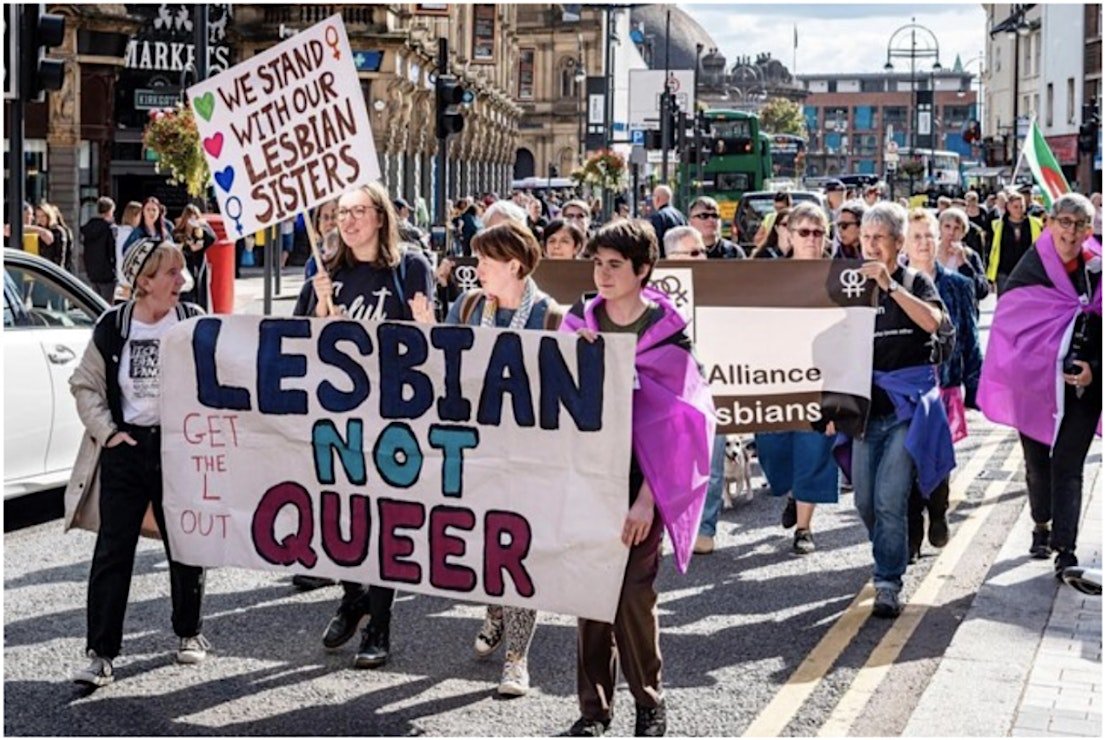By Beatrice Louis and Scott Douglas Jacobsen
#EqualPayDay is over. With it, we find the regular slew of mutual recriminations. While liberals resolved to fight the good fight to decrease the gender pay gap, Conservatives have re-posted and rebooted a number of videos, and articles, intent on destroying what they like to phrase as the ‘pay gap myth’, raising a lot of questions about the argument and the intent. People from both sides of the debate might have found their social media peppered with well-meaning, sometimes cynical posts – about the supremacy of facts, the insidiousness of prejudice, and the general hopelessness of it all. In the midst we ask, what do both sides actually claim about the gender pay gap
The Former US President Barack Obama has lamented the gender pay gap in his public addresses, going so far as to hold the idea that a woman is paid only 77 cents for every dollar a man makes. He states that this should be repulsive to all right-thinking people. That number has since undergone some revision, and more recently, literature on the gender pay gap quotes the gap at 20 per cent. So it seems the gap has been reduced by a 3% difference, which, statistically speaking, is quite a lot. The contention is, that on average a woman earns 80% of what a man earns because she is a woman, by dint of being a woman. That gender pay gap is said to increase steeply when it comes to women of colour such as Hispanic, Black, and Native American women, for examples.
However, without more information, the above quoted statistics tend to induce a slight feeling of discomfort. A feeling that either this is one of the great injustices of the age that needs rectification, and yet does not. More often however, there is a sense that a more nuanced based parsing of the factors is seriously required because arriving at a number to represent the gender pay gap, observed through the averaging over the labour and qualifications of all women in a country, leave alone the world, is notoriously difficult. An averaging of the pay of all women, from CEOs to middle managers to mom-and-pop shop owners to caretakers, simply cannot stand up to a closer and rigorous statistical analysis. How could it? At face value, the number seems more like a slogan uncritically absorbed into the culture rather than an examined statistic taking into account the full nuance of the career and job market.
Does the average take into account that all of these women will be in wildly differing professions with extreme differences in pay, by virtue of their profession? Does the average take into account the time when the average woman starts working, and whether these women all retire at the same age? Does the average take into account the number of working hours? What about the hours spent in overtime? What about the riskiness of the job with the potential for hazards to limb and even life? Does the average take into account differences in educational qualifications? Does the average take into account the level of pay in the marketplace for those specific qualifications, whether at the undergraduate, graduate, or post-doctoral levels?
Perhaps, most importantly in the context of women, does the average account for maternity leave, the resulting loss in career advancement and therefore loss in earnings? What about the women who choose to take a break to have children which may run to a few years? These questions are not to attack feminist literature on the gender pay gap – with the exception of the last two factors, the previous are relevant in also calculating an average pay for men. There are some unavoidable things in a society and in life, for men and for women. Societies and their citizens have a stake in continuing to exist and develop in healthy ways. But people die and societies need new people. Women bear the greater burden in this responsibility compared to men in terms of physiology. Women are pregnant for 9 months; men are simply not. These are facts of life. An unavoidable such as this should be impetus for the support of women by society with compensation in time and care, especially as many women are taken from their jobs in this.
There are plenty of other factors. Simply put, without controlling for a very long list of variables (qualifications, professional choices, flexibility, overall duration as a professional), these factors are bound to affect a calculation of the average for pay men as well as women, and so influence the gender pay gap. Strangely, very few of the pieces in support of the pay gap describe which variables were accounted for in the study they quote. Obviously, there cannot be an in-depth statistical analysis of a study in a blog post or short video, but there does seem to be a regrettable lack of information as to the variables that were controlled for, when undertaking a specific study.
Detractors of the pay gap argument argue that, once these factors are taken into account, it emerges that any subsisting pay gap is due almost entirely to individual career choices and fault those who insist on the pay gap, as peddling false statistics. So, the implication is that those on the Liberal side are being dishonest when they present the gender pay gap, which is akin to the Liberal side saying that the Conservative side is lying when the conservatives claim that the gap does not exist in the first place. By the same metric quoted above, it is clear that the arguments of those against the pay gap also require work. After some righteous flag waving about the paucity of proper research on the part of liberals, anti-wage gap activists simply argue that when these factors are taken into account, the wage gap reduces to the point of vanishing, but do not explain how they came to this conclusion.
Instead, they make a logical leap to alleging that the gap is due to women picking streams that pay less. Prominent critic of contemporary feminism Christina Hoff Sommers has caustically remarked that if women wanted to be paid equally, they should opt for electrical engineering instead of ‘feminist dance therapy’. Of course, Sommers is trying to make a point about individual choices but, at the same time, it should be noted here that ‘feminist dance therapy’ is not a recognised discipline or field. However, studies with a narrower focus that have attempted to survey wages within an industry have found that even within the same profession, with men and women seemingly starting at the entry level with similar qualifications, and after controlling for job title and responsibilities, a pay gap persists, although the statistic quoted is often in the 5 – 6 % range.
That leaves us with the 77%, implied 80%, and 94-95% gender wage gap. In each of these cases, the liberals have the stronger argument because, by definition, the gap persists to some degree, whether 23%, 20%, or 6-5%. Other studies have refuted the mantra of the detractors, insisting that career choices do not, alone, explain the pay gap or pay discrimination. If there is an x factor that does explain the pay gap then, it is yet to be found. But the multiple measurements of the gender wage gap point to just that – a gender wage gap rather than the accusatory ‘gender wage gap myth’. Curiously, those most reluctant to accept that there may be a pay gap may well be the most unlikely opponents the women’s rights movements expects to face – Men who find the suggestion of the pay gap offensive because they cannot imagine why a recruiter or hiring manager would pay anything other than the market rate in light of the skills an employee has. In their view, to suggest that there are discriminatory payment policies occasioned by sexism is a personal affront to the purely dispassionate considerations that should guide a hiring process – namely, the value of one’s skills and qualifications.
Missing in the discussion about the pay gap, is the very real effect of gaps or breaks in women’s careers because of the physiological reality of maternity leave. Maternity breaks and policies obviously differ from country to country, and the amount of time taken off work by mothers obviously varies from woman to woman. But it is not a feat of logic to comprehend that the break taken by women is bound to affect their advancement and promotions, and thereby their pay.
The pay gap discourse is by no means simple. From a political as well as an economic perspective, multiple factors affect a person’s pay and their overall income. The above discussion exposes the limits of relying purely on incomplete, or overly generalised statistics to solve a socio-economic issue. If this discussion, and indeed the very issue of pay discrimination is to move forward, more innovative methods of gathering the information and data necessary have to be devised. A few issues must, of necessity, be highlighted here.
Firstly, any statistic that attempts to make a credible argument about a wage gap cannot, and must not be averaged over the entirety of the female workforce. Specific studies must be devoted to sub-groups of companies in a sector, and should not attempt to portray wages of all women in the country or a region. Even within an industrial classification, such as the ‘finance industry’, those obviously include investment banks, hedge fund managers, and a host of other types of companies. An argument relating to a wage gap within the financial sector must of necessity separate these different categories of companies. Secondly, research must focus on a smaller sample of women who graduated with qualifications similar to men at a specific point in time and track their progress through a defined number of years. If this set of women are observed to avail of maternity leave, appropriate adjustments have to be made to account for the regression in professional advancement and loss of earnings. Useful comparisons may be made to the rate of progression of men through the industry when they may have also availed of ‘leave’ for medical / physiological reasons, in order to determine whether sexist, or discriminatory factors affect women’s progress in the workplace. There are, undoubtedly, studies and statistics that are more nuanced, arrived at in more scientific conditions, and are therefore more defensible. They have to be incorporated into the rhetoric in order to reduce, or at the very least mitigate the damage done by detractors. Throwing around large, shocking numbers for emotional value is doing infinitely more damage to this issue than can be assessed. In fact, it has become commonly accepted by now that attempts to address the inequity have slowed since 2001. These are just two examples of variables that have to be accounted for in research that purports to hold the divine truth about a wage gap.
Lastly, there are a few characteristic tropes and arguments that should cease to be part of the wage gap discourse. A prime example is the lack of women in ‘STEM’ fields and the resultant impact on their earnings. When confronted with the allegation that women earn less because they choose lesser paying jobs, feminists often retort that STEM is also closed off to women because of the same factors that engender pay discrimination. However, true as that may be, it is irrelevant to the wage gap discourse. The ‘wage gap’ discourse and the rhetoric that surrounds it is based on the notion of ‘sexism’ or ‘gender discrimination’. To elucidate, the ‘issue’ that the women’s rights movement invites focuses on is the eradication or rooting out of unjustified gender biases that impact how women’s professional contribution and skills are assessed. The underlying assumption therefore, is that despite the presence of qualified and motivated women, they are not being valued accordingly. The lack of women in a specific field therefore, is extraneous to this discussion and should not be confused. That women are a minority in STEM fields, and therefore less represented in such high-earning industries is, and should be a separate issue. Sexist and misogynistic tropes and attitudes that drive women out of, or keep them away from STEM fields is rightly an issue for the women’s movement, but should be divorced from the wage gap discourse which is predicated on unjustifiable biases and preconceived notions. The bundling of these ideas in debates does no one any favours.
There is clearly a problem relating to a gender pay gap. But unlike domestic violence, education, or sexual harassment, the wage gap is a highly complex issue. Treating it otherwise for the sake of brevity and activism, or, quite simply as a public relations tactic is extremely damaging. As a first step, writers on the issue should commit to using verified, cautious statistics that clearly elucidate what variables have been controlled for, and what industry they are applicable to, instead of catchy videos about a general gap.








Article Discussion